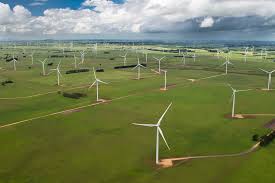AGL Energy is dismantling its project development team in a move the clean energy industry fears as yet another sign that the market for new large scale renewable energy projects is diminishing.
It is understood that several members of the project development team have left, or are about to leave, including those with a focus on renewable energy – either in seeking new projects or writing contracts with third parties. The remainder are to be absorbed in another department.
The move comes as the Australian renewable energy industry remains moribund, with $15 billion of large scale projects at a standstill, and no new finance committed for the last 18 months, pending the Abbott government’s review of the renewable energy target.
That review is expected to recommend vast changes to the target, including a dilution to a real 20 per cent target, which might lower the fixed target from 41,000GWh to around 25,000GWh. An alternative could be to strike a 30 per cent by 2030 target, although this would still have the impact of reducing the amount of construcion over the next five years.
The news of AGL’s apparent downgrading of its project development team comes as US solar giant Recurrent Energy closed its Australian development team, citing policy uncertainty, and numerous other international and local developers warn of doing the same.
 AGL has one of the biggest portfolio of renewable energy projects in Australia, and has chosen to mostly build its own developments rather than contract others, including the Macarthur wind farm (pictured), the largest in the country.
AGL has one of the biggest portfolio of renewable energy projects in Australia, and has chosen to mostly build its own developments rather than contract others, including the Macarthur wind farm (pictured), the largest in the country.
It is currently building large solar farms in Broken Hill and Nyngan, and has the huge Silverton wind project in western NSW also on its books.
AGL Energy has previously been the strongest supporter of the renewable energy target among the big three retailers, and until late last year its managing director Michael Fraser chaired the Clean Energy Council.
However, the purchase of the 2.2GW Loy Yang A brown coal generator in 2012, and the recent agreement to by the 4.6GW Macquarie black coal generators in NSW has changed its generation profile considerably.
AGL would not comment on the numbers lost in the team. A spokesperson sent this statement by email:
“AGL Energy Limited (AGL) reviews its business structure on an ongoing basis. To deliver on our business strategy and remain competitive Merchant Operations is implementing a new operating model and realigning its structure.
“While the project development team will continue to focus on AGL’s pipeline of development projects, this team will move into Merchant Operations where there are natural synergies and opportunities for greater efficiencies.“
AGL Energy is no longer pushing for the large scale renewable energy target to be retained at 41,000GWh, saying in its submission to the RET Review panel that it would be impossible to meet – a view that is contradicted by the clean energy industry, international equipment suppliers such as GE and Vestas, and the RET Review panel’s own modelling. It also wants an end to support for rooftop solar.
AGL has previously argued that the National Electricity Market has a surplus of base load capacity of around 9,000MW.
RenewEconomy asked AGL Energy if the decision reflected its view that it would not need to develop or contract for as many renewable energy projects as previously expected, or if the pipeline of development had been put on hold because of policy certainty.
The spokesperson said:
“While policy certainty is important, AGL has a pipeline of development projects which it is still progressing through the planning and consultation phases.”










